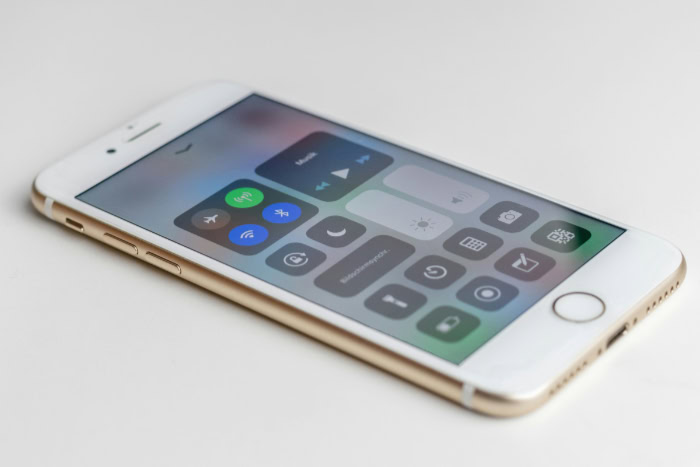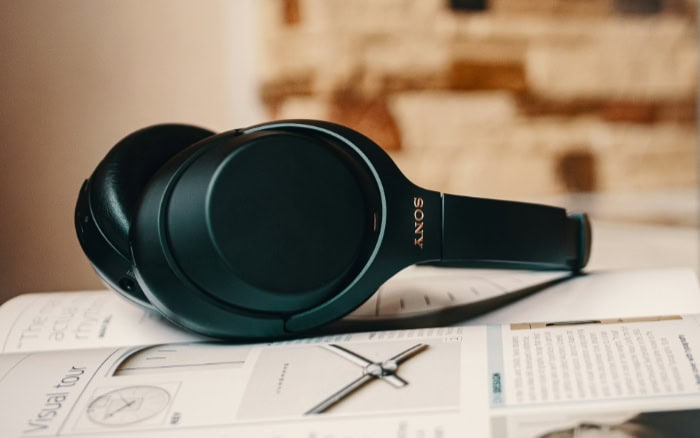Bluetooth 5.3 vs. 5.2: An In-Depth Comparison

Bluetooth has become so deeply embedded in our lives that we often take its evolution for granted, yet each new version quietly reshapes how we connect and interact with technology. Bluetooth 5.2 introduced groundbreaking capabilities like LE Audio and multi-stream functionality, but Bluetooth 5.3 refines the formula, targeting areas such as reliability, efficiency, and performance under real-world conditions.
Instead of offering flashy overhauls, these updates may seem small at first glance, but they carry significant implications for how devices like headphones, wearables, and even smart appliances perform.
Performance and Efficiency
Bluetooth technology plays a crucial role in ensuring seamless communication between devices, but performance and efficiency are two aspects that can make or break the user experience. Bluetooth 5.2 and 5.3 each bring features that address these critical areas, with the latter introducing enhancements focused on reducing power consumption, improving latency, and boosting connection stability.
Power Consumption
Efficient power management has always been a priority in Bluetooth development, particularly for portable devices with limited battery capacity. Bluetooth 5.3 achieves a notable reduction in energy usage through features like Connection Subrating and periodic advertising optimization.
Connection Subrating allows devices to adjust their connection parameters dynamically based on activity. For instance, when a device is idle or performing low-energy tasks, it can shift to a lower power state without losing its ability to respond promptly when needed.
This flexibility ensures that devices consume less power during periods of inactivity, significantly extending battery life, particularly for wearables and IoT devices.
Periodic advertising, a vital mechanism for broadcasting signals to nearby devices, is also improved in Bluetooth 5.3. The optimization of this process streamlines how devices advertise their presence, using shorter and more efficient intervals to minimize energy demands.
For devices like smart trackers or sensors that use periodic communication to stay connected, this improvement translates into longer operational durations without needing frequent recharges. Power efficiency is taken a step further with these updates, making Bluetooth 5.3 ideal for energy-conscious applications.
Latency Improvements
Low latency is crucial for real-time applications such as gaming, video calls, and audio streaming. Bluetooth 5.3 introduces enhancements that reduce communication delays between devices, creating smoother interactions and boosting responsiveness.
For gamers using Bluetooth-enabled controllers or headsets, minimal latency ensures precise input and immersive audio, key elements for an enjoyable experience. Similarly, video calls benefit from faster transmission speeds, resulting in better synchronization between sound and visuals.
While Bluetooth 5.2 already provided strong latency performance, Bluetooth 5.3 fine-tunes the connection process to eliminate unnecessary delays. This improvement can make a noticeable difference in scenarios where split-second timing is critical, especially in competitive gaming environments or live broadcasting setups.
The reduction in latency ensures that devices connected via Bluetooth deliver immediate feedback, enhancing overall interaction quality.
Connection Stability
Wireless connections often face challenges in crowded environments where multiple devices compete for signal space. Bluetooth 5.3 tackles this challenge with Channel Classification, a feature that evaluates channel interference and prioritizes those with stronger signal reliability.
This refinement enhances connection stability by steering devices away from congested frequencies. For settings like offices, airports, or homes with numerous smart devices, Channel Classification ensures consistent communication regardless of external interference.
Bluetooth 5.3’s ability to adapt to environmental conditions translates into fewer dropped connections and improved signal quality. This feature is especially beneficial for IoT ecosystems, where stable links between devices like alarms, cameras, and sensors are vital for their functionality.
By mitigating the impact of crowded wireless environments, Bluetooth 5.3 enables devices to maintain dependable performance under challenging circumstances.
Performance and efficiency are central to how Bluetooth operates across diverse applications, and the advancements seen in Bluetooth 5.3 demonstrate a thoughtful approach to addressing real-world needs. Whether it’s extending battery life, reducing delays, or maintaining reliability in complex environments, these improvements enhance the overall functionality of Bluetooth-enabled devices.
Audio Quality and User Experience

Audio quality and user experience are critical factors that define how Bluetooth impacts devices like headphones, speakers, and wearables. Recent advancements in Bluetooth versions 5.2 and 5.3 have significantly enhanced wireless audio performance, paving the way for richer sound, synchronized playback, and seamless multi-device connectivity.
While Bluetooth 5.2 introduced groundbreaking features, Bluetooth 5.3 refines and optimizes certain areas, delivering a smoother and more reliable audio experience for users.
LC3 Codec Support
The LC3 codec was first introduced with Bluetooth 5.2 as part of the LE Audio framework and represents a significant leap in audio clarity and efficiency. Unlike traditional Bluetooth audio codecs, LC3 achieves higher sound quality even at lower bitrates, resulting in crisp, detailed audio while minimizing power consumption.
This balance between quality and efficiency ensures minimal battery drain, helping earbuds, headphones, and wearables perform better during extended use.
Bluetooth 5.3 continues to support LC3 but introduces subtle enhancements to its implementation. Devices equipped with Bluetooth 5.3 are often better optimized to handle LC3 transmissions dynamically, ensuring consistent audio performance in varying environments.
For instance, when interference or weak connections arise, Bluetooth 5.3 helps maintain sound quality more reliably through its improved channel management and connection subrating features. This refinement makes audio streaming even smoother and more robust for users who value uninterrupted sound clarity.
Multi-stream Audio
Multi-stream audio emerged with Bluetooth 5.2, transforming how wireless audio devices interact with sources. It allows a single source, such as a smartphone, to simultaneously transmit audio streams to multiple receivers, like truly wireless earbuds.
This capability ensures synchronized audio playback, eliminating lag between left and right earpieces while enhancing stereo sound quality. Additionally, multi-stream audio expands functionality for devices like smart speakers, enabling multiple units to receive audio streams simultaneously for a more immersive listening experience.
Bluetooth 5.3 maintains multi-stream audio but refines its performance further by leveraging improved connection stability and reduced latency. Devices using Bluetooth 5.3 are more adept at maintaining synchronization across receivers, even in environments with heavy wireless traffic or interference.
This refinement benefits not only earbuds and audio systems but also advanced use cases like multi-room speaker setups, ensuring consistent playback across multiple devices. The enhanced reliability further solidifies Bluetooth 5.3 as an excellent choice for applications requiring high-quality, synchronized audio performance.
Synchronization and Latency for Audio Applications
Precise synchronization and low latency are essential for delivering smooth audio experiences in contexts like gaming, video calls, or live streaming. Bluetooth 5.2 already made strides in reducing delays, ensuring real-time communication between audio sources and receivers.
However, Bluetooth 5.3 builds upon this foundation with refined latency management, enabling even faster response times for audio transmission.
Gamers, for example, benefit from the enhanced latency reductions seen in Bluetooth 5.3, where sound effects and voice chats are delivered without noticeable lag. Video conferencing also sees improvements, as Bluetooth 5.3 ensures tighter synchronization between audio and video, offering clearer and more natural communication during calls.
The updated connection protocols optimize timing and ensure greater accuracy for audio playback, making Bluetooth 5.3 better suited for real-time applications requiring split-second precision.
Both Bluetooth 5.2 and 5.3 deliver excellent audio performance, but the refinements introduced with the latter bring nuanced improvements in clarity, synchronization, and reliability. These updates elevate the user experience across a wide range of audio-enabled devices, ensuring smoother playback, lower latency, and dependable connectivity in diverse scenarios.
Practical Applications and Compatibility

Bluetooth advancements are not only about improved performance and efficiency but also about real-world applications and seamless integration across devices. Bluetooth 5.2 and Bluetooth 5.3 bring different benefits to IoT systems, personal devices, and industrial tools while maintaining connectivity standards between versions.
Device Compatibility
Compatibility plays a vital role in Bluetooth adoption, ensuring different versions can communicate without issues. Devices equipped with Bluetooth 5.2 can seamlessly connect to those featuring Bluetooth 5.3, as the technology maintains backward compatibility.
Both versions operate within the same specifications and frequency, ensuring smooth interaction between devices regardless of the version. For example, a smartphone with Bluetooth 5.3 can pair efficiently with Bluetooth 5.2-enabled headphones, delivering consistent audio quality and functionality.
However, the optimizations introduced with Bluetooth 5.3 may not be fully leveraged by devices using older versions. Features like Channel Classification and Connection Subrating are exclusive to Bluetooth 5.3, meaning devices without support for these enhancements might not benefit from the improved stability and efficiency.
Despite this, the fundamental ability to pair and exchange data remains intact, making interoperability between devices reliable for most use cases.
Impact On IoT Devices
Bluetooth continues to play a significant role in driving the Internet of Things forward, particularly in smart home devices, wearables, and industrial applications. Bluetooth 5.3 introduces features tailored for IoT environments, addressing challenges such as power efficiency, connection stability, and signal management.
Many IoT devices rely on periodic communication to remain functional, such as sensors transmitting updates or smart home hubs managing connected appliances. The optimization of periodic advertising in Bluetooth 5.3 ensures these processes are more efficient, extending battery life across a wide range of low-power devices.
Wearable technology, such as fitness trackers or smartwatches, benefits from the enhanced power management offered by Connection Subrating. These devices often prioritize low energy consumption due to their compact batteries, and Bluetooth 5.3’s ability to dynamically adjust connection states reduces unnecessary energy usage.
Meanwhile, industrial IoT systems, where consistent performance is critical, benefit from Channel Classification, which minimizes interference and strengthens signal reliability in environments with heavy wireless traffic. Devices across sectors gain practical advantages, making Bluetooth 5.3 ideal for modern IoT applications.
Security Enhancements
Security remains a fundamental aspect of any wireless technology, and both Bluetooth 5.2 and 5.3 bring robust measures to protect user data during transmission. Bluetooth 5.2 supported advanced encryption techniques, ensuring secure communication between paired devices.
Bluetooth 5.3 builds upon this foundation with increased flexibility in encryption protocols, allowing devices to adapt their security measures more efficiently. This improvement enables faster pairing and strengthened data protection, especially for devices requiring frequent authentication, such as wearables or payment systems.
Additionally, the enhanced connection reliability in Bluetooth 5.3 further supports security measures, reducing the likelihood of dropped or interrupted connections that could expose data. For IoT systems transmitting sensitive information, such as smart locks or medical monitoring devices, these updates bolster trust in Bluetooth’s ability to safeguard transmissions.
Bluetooth 5.3 ensures that devices continue to deliver secure communication without sacrificing functionality or speed.
Conclusion
Bluetooth technology continues to evolve with each version, and the advancements between Bluetooth 5.2 and 5.3 reflect this progression. Bluetooth 5.2 introduced groundbreaking features such as LE Audio with the LC3 codec, multi-stream audio capabilities, and Isochronous Channels, which transformed audio quality and device connectivity.
Meanwhile, Bluetooth 5.3 refined these innovations, focusing on enhanced power efficiency with Connection Subrating, improved connection stability with Channel Classification, and optimized periodic advertising for IoT devices. The result is a more seamless and reliable user experience, especially in challenging environments or with low-power devices.
Whether upgrading to devices with Bluetooth 5.3 is worth it ultimately depends on individual needs. Users seeking improved battery life, better responsiveness in real-time applications, and greater reliability in crowded settings—such as offices or IoT-heavy homes—will find tremendous value in Bluetooth 5.3-enabled devices.
On the other hand, those primarily using Bluetooth 5.2 may already enjoy excellent performance for audio clarity and basic connectivity, making an upgrade less essential until specific features become relevant to their use case.
The future of Bluetooth technology holds immense promise as more devices adopt its latest versions. From wearables and smart home systems to industrial IoT setups, Bluetooth will continue to play a pivotal role in connecting the digital and physical worlds.
With ongoing refinements in performance, energy efficiency, and security, Bluetooth remains foundational to building the next generation of wireless solutions, ensuring a smarter, more connected future for users worldwide.



